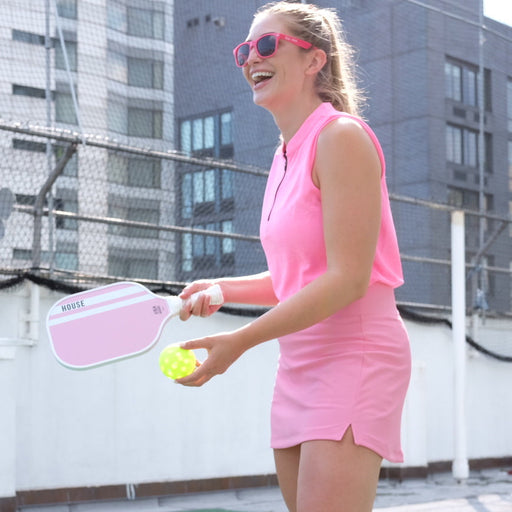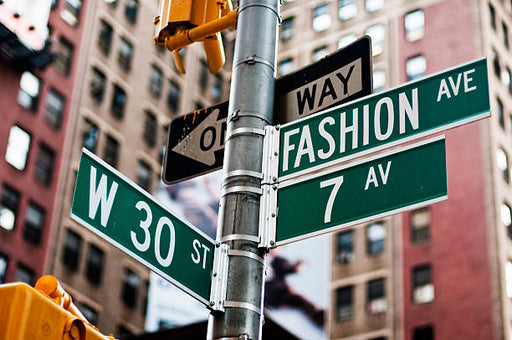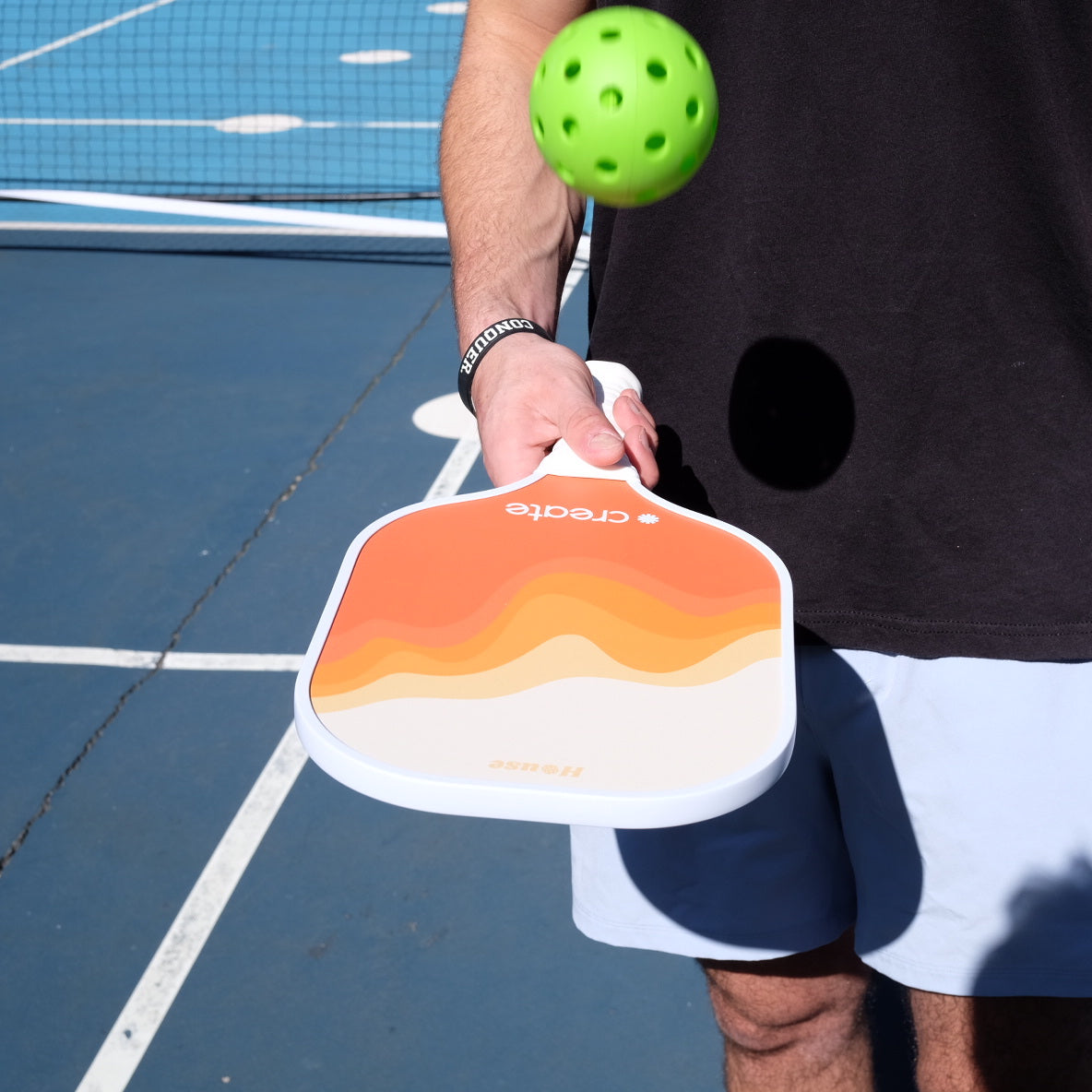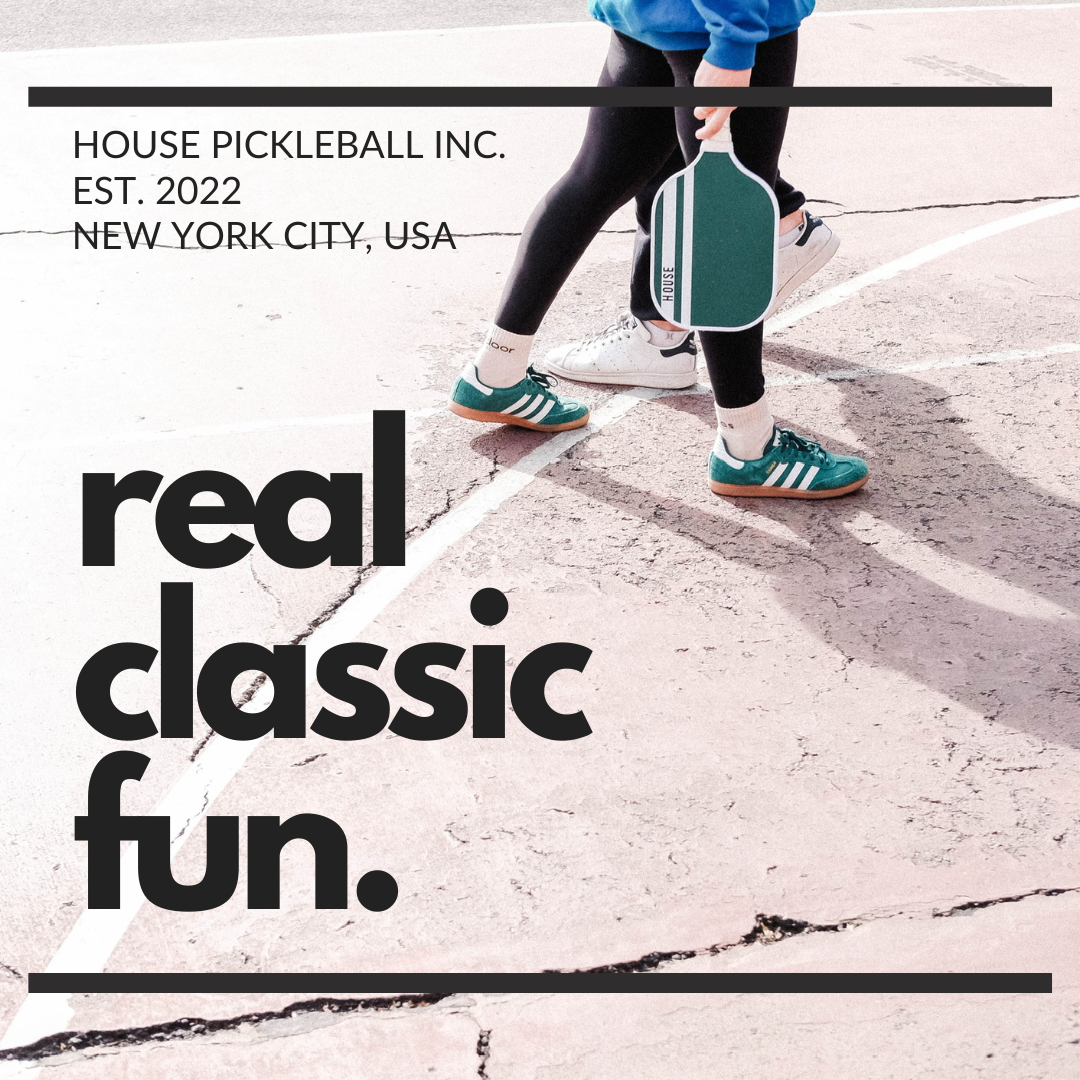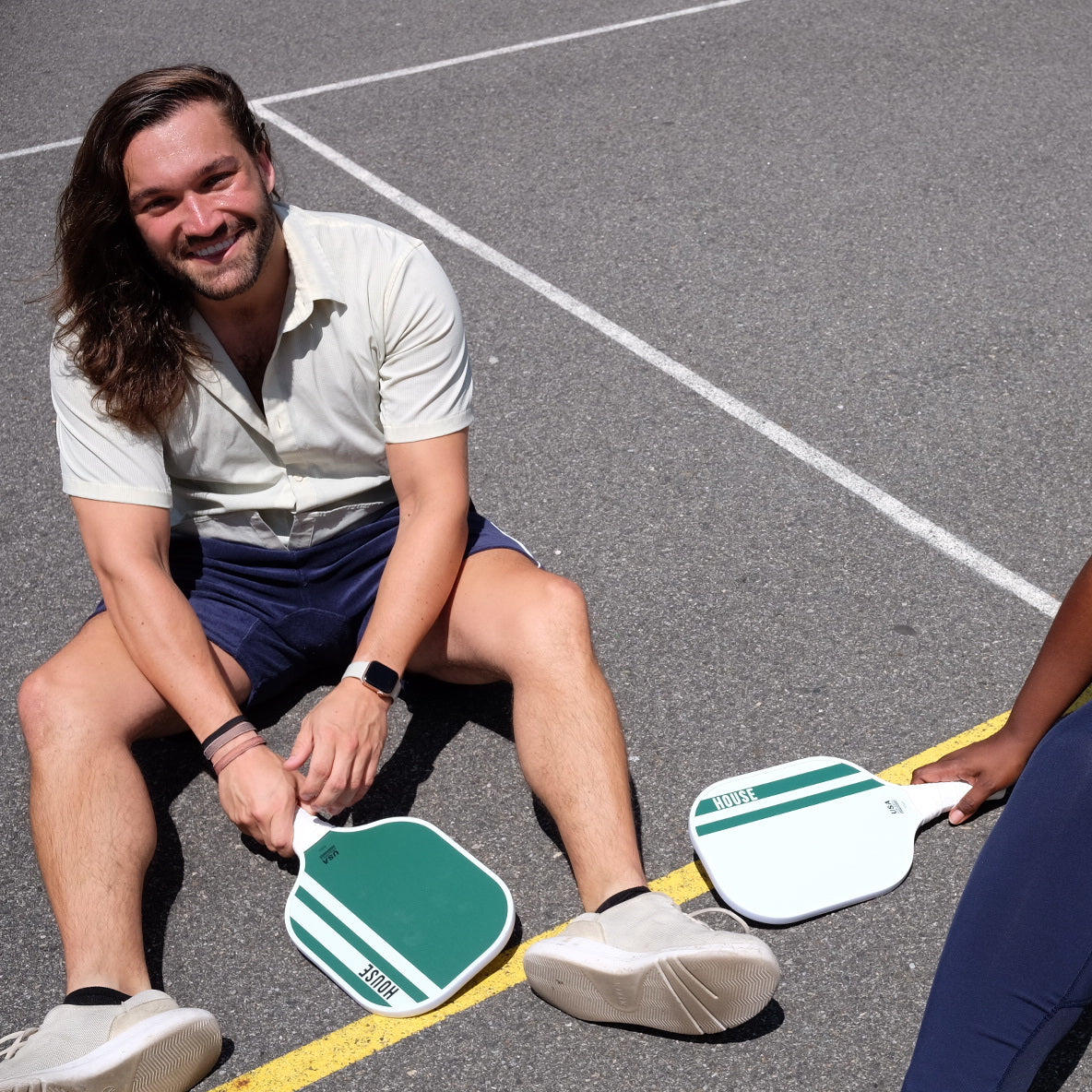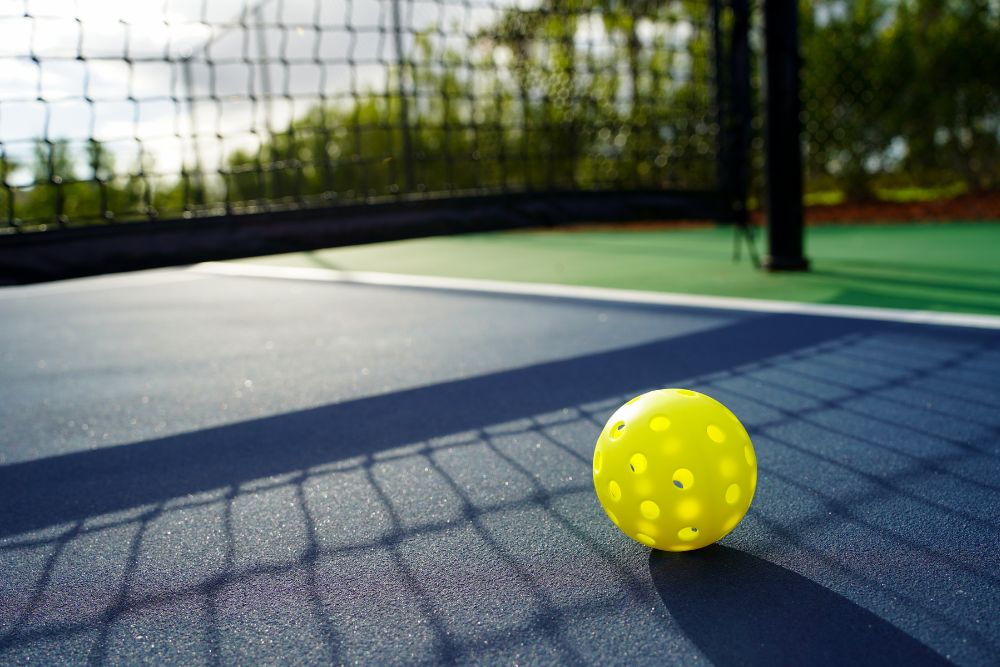
5 Differences Between Indoor Vs Outdoor Pickleball + More
If you’re a beginner, you might be surprised to hear that so many people are wondering about indoor vs. outdoor pickleball. Shouldn’t you play a game of pickleball the same no matter the type of court?
Well, you’re partially right. While the rules are the same no matter if you’re indoors or outdoors, there are some major differences between the pickleball ball you should use.
Yes, you’ve read that correctly. While the differences may seem minor, there is a difference between indoor and outdoor balls.
Also, there are some pros and cons between both types of balls that make certain players favor one over the other.
Whether you’re a beginner or simply a player who had no idea there are so many differences between indoor and outdoor pickleball - you’re in the right place.
Here’s everything you need to know:
Main Differences Between Indoor And Outdoor Pickleball

If we’re talking about the ball, you might’ve been surprised a moment ago when I told you that you cannot use the same type of pickleball on indoor and outdoor courts.
Most of the reasons behind this are practical. Indoor courts tend to have a surface like hardwood, which is not suitable for the same type of ball you might use outdoors.
Of course, not all balls are the same and some brands have unique specifications. You are always free to have your own favorites.
Just keep in mind that there are specific metrics and regulations about pickleball equipment that you need to follow if you plan on playing this sport professionally.
Overall, when it comes to indoor vs outdoor pickleball, here are the main differences:
1. Weight
One of the first things most players are told is that outdoor pickleballs weigh more than indoor ones.
It’s really easy to understand why. Outdoor balls need to withstand a significantly larger amount of obstacles, such as the wind.
The regulations state that a pickleball should weigh anywhere between 0.78 and 0.935 ounces. There are no strict rules for either type of balls, as long as they fall within this parameter.
After examining numerous brands of balls, it seems that the average weight of an indoor pickleball is close to 0.85 ounces, while outdoor pickleballs usually weigh near the upper end of the scale - around 0.925 ounces. This is because the holes in the outdoor ball are larger, reducing the amount of material in the ball.
Still, this weight difference is quite minimal, and you probably wouldn’t feel it just by taking the ball in your hand.
However, it is still enough to bring lots of benefits, especially when playing outdoors. If the ball was just slightly lighter, you would probably have issues controlling it.
Several factors are contributing to the weight difference, but the most notable two ones are:
- Materials
- Number and diameter of holes
I’ll explain all of these in a minute.
2. Hardness
The next important difference is the hardness of pickleball. In general, outdoor pickleballs are harder than indoor ones.
Just like the weight, this is so the balls could be resistant to wind and most other weather conditions.
But, what determines the hardness of the ball?
One feature is thickness. Outdoor pickleballs are usually made to be thicker than indoor ones. Keep in mind that this doesn’t affect the dimensions of the ball itself.
Another feature is the material the ball is made out of. But all pickleballs are made of plastic. This might make you think that the material isn’t to blame. However, not all plastics are created equal.
Types Of Plastic And Hardness Levels
Pickleballs can be made out of four different types of plastic:
- LDPE: Low-Density Polyethylene
- HDPE: High-Density Polyethylene
- PP: Polypropylene (This is the same material our honeycomb paddle cores are made of)
- PET: Polyethylene Terephthalate
Each of these plastics has a different hardness level. How do we determine that?
You can measure the hardness of a pickleball with the Durometer hardness test that uses Shore scales. The hardness is graded on a scale of 0 to 100, with 0 being the softest and 100 being the hardest.
When it comes to the types of plastic I’ve mentioned, their hardness goes as follows:
- LDPE: 40 - 50
- HDPE: 60 - 70
- PP: 70 - 83
- PET: 85 - 95
There is no rule that states that outdoor balls should be made from different types of plastic than indoor ones. However, you are more likely to find outdoor pickleballs made out of HDPE than LDPE, and vice versa.
You’ll rarely find balls made out of PP or PET. This is because of the former regulations that stated that the hardness of a pickleball should be between 40 and 50.
While these requirements no longer apply, most manufacturers will still make balls that fall on the low-medium end of a hardness scale.
This is because pickleballs with high hardness won’t have a proper bounce or compression, which might negatively impact your game. It also makes them more prone to cracking. This is something we experience often during the cold months here in New York.
3. The Number of Holes
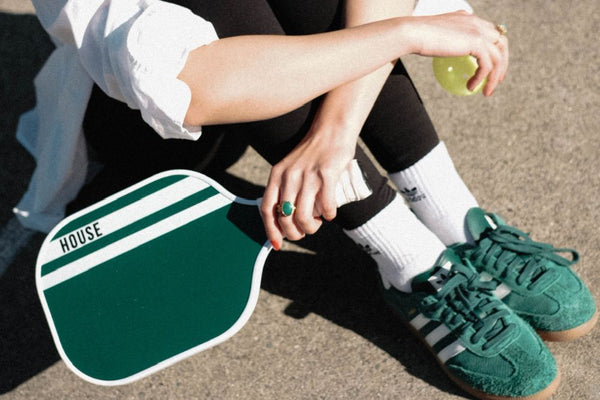
What makes pickleball unique from a tennis ball or a ping pong ball is that it has lots of holes in it.
These holes are not just for aesthetics. They have an important role: To maintain the flight trajectory and to allow players to achieve precise and soft hits.
Outdoor pickleballs have 40 holes in them. On the other hand, indoor pickleballs usually have 26, but this number might vary a bit - although there should never be fewer than that.
The reason why there is a different number of holes is quite obvious, once you think about it. The more holes there are, the less external factors will impact your shot.
When you play outside, you need to count on many weather conditions, with wind being the most problematic. Even the slightest breeze might affect the trajectory of your shot!
This is why outdoor balls have so many little holes. They help improve aerodynamics and help you play a better game.
Opposite of that, there are no uncontrolled weather conditions indoors. In other words, there is no need for as many holes as you’d require when playing outdoors.
4. Hole Diameter
In general, there is no rule that determines the diameter of a hole in a pickleball. However, there are some dimensions that have been used in practice.
As indoor pickleballs have fewer holes, these holes are usually larger. Their average size is roughly 0.43 inches.
Holes on an outdoor pickleball are quite smaller, and their average size is 0.282 inches.
Keep in mind that this size varies from brand to brand. It is especially hard to keep track of diameter when there are no regulations.
To make things even more confusing, some outdoor pickleballs don’t have uniform size holes, but rather have holes that come in two dimensions! This can rarely be seen in indoor pickleballs.
Before we go any further, I’d like to touch upon one thing I’ve mentioned before and it has a lot to do with the weight of a pickleball.
Due to the small size of their holes, outdoor pickleballs have more surface compared to indoor ones. This is one of the contributing factors that help them have more weight.
5. Durability
Finally, the last difference lies in the durability of your pickleball.
Despite what you might think, outdoor balls are not more durable than indoor ones.
They are made out of harder materials that are not as elastic as the ones used for indoor pickleballs. This makes them more prone to cracking and becoming disfigured.
On the other hand, indoor pickleballs have more elastic properties, so they are unlikely to change shape or become crooked.
Not just that, but indoor balls will not be under as much pressure as outdoor ones. All of this means they will probably last you for a good while.
It’s important to note that no pickleball will last forever. The ball will lose its shape over time, and wear and tear damage will become noticeable. Eventually, cracks become likely, and at that point the life of a pickle ball is over.
Can You Use Indoor Pickleballs Outdoors?

This is a question I see commonly asked, so let’s clarify a few things.
Theoretically, nothing is stopping you from using an indoor pickleball outdoors, and vice versa. Both balls are entirely within the US regulations, so you can play with them on any courts.
However, you should always try to use the right type of pickleball for any game. This is because both have certain advantages for the terrain they are intended for.
If you have to use just one ball, stick to the outdoor one. This is because outdoor pickleball can do just fine when used indoors, while the indoor one won’t excel when faced with wind and most outdoor terrains.
The indoor pickleball is very lightweight and not too aerodynamic. While the outdoor ball won’t have the right bounce and it might be a bit challenging to control indoors, you’ll still do better than by using the indoor pickleball outdoors.
Which Pickleball Is Better?
While I touched upon this a moment ago, you might still be confused about which ball is better.
And it’s true - there are some strong opinions on the indoor vs outdoor pickleball debate.
However, I cannot state that one ball is better than the other. Both were designed and manufactured for different purposes and different terrains.
Still, as I’ve already mentioned, if you really insist on having just one type of ball, then you might want to opt for the one meant for outdoors, as it’s more versatile.
Should You Play Pickleball Indoors Or Outdoors?
Another question many people wonder is whether they should play pickleball indoors or outside.
Once again, I cannot give you a precise answer because it all depends on your preferences and location.
Both types of pickleball have their own advantages and flaws. Not to mention how not all conditions are the same.
For example, if you’re looking at pickleball courts in San Antonio, you will probably be able to choose outdoor ones every time due to the beautiful, sunny weather.
On the other hand, when choosing courts in Seattle , you might need to look out the window first. If it rains, your options are a bit more limited.
Let’s get into more depth and understand the pros and cons of each type of pickleball, so you can choose your favorite:
Pros And Cons Of Indoor Pickleball
First, I’ll go over indoor pickleball. Most novice players will probably opt to play indoors anyway, as the conditions are consistent.
Indoor courts are not dependent on the weather conditions. The temperature will always be cool, which will protect you both from harsh sun and from rain and snow. This also means you don’t need additional equipment such as hats or sunscreen.
Next, everything is well-controlled. The court is surrounded by walls, so the chances of you losing your ball are slim to none.
Not just that, but indoors are usually better equipped. There will be restrooms near almost all indoor courts, rotation systems will be well-organized, and most of the time there are spectator stands.
Finally, many indoor courts are designed specially for certain skill levels, which can help your game.
However, this doesn’t mean that indoor pickleball doesn’t have its own flaws.
For example, everything is really loud! You’ll hardly hear yourself, let alone your teammate or competitor, with the sound of the ball hitting the floor, the music you may be playing, and everyone yelling.
Certain indoor courts also tend to be so shiny that you’ll find the glare of the ceiling and walls distracting. Add multiple lines that are usually found on the gym floor, and you might be in for a mess!
Due to the type of ball and surface, the game might be a lot faster indoors. The ball won’t bounce as much but it will fly faster, so you might need to up your game.
Finally, while you don’t need hats, you’ll need a new pair of shoes. You cannot play in the same shoes you used for walking outdoors!
Pros And Cons Of Outdoor Pickleball

Next, we have outdoor pickleball, which is my favorite just for that feeling of fresh air and being more out in the open.
This might be the first pro of outdoor pickleball: Fresh air. There won’t be any weird gym smells, and the slight wind might even help you cool off a bit in the summertime.
Outdoors are also more spacious than indoors. This gives players a unique feeling of freedom. Not just that, but you can hit with more force without being worried that the ball won’t have where to go.
Compared to indoor courts, outdoor courts often have better, clearer lines so you are unlikely to get confused. Finally, the ball will have a great bounce, so you can enjoy the game in a special way.
However, what is the biggest advantage of outdoor pickleball is also its biggest downside, and that is the weather. The wind and the sun will make it harder for you to play. Not to mention how you can’t play at all during the rainy weather! Another thing to consider: during the winter the sun often sets before most people get off work, making playing after-work Pickleball at a court without lights nigh impossible!
And if the ball flies far away, you will struggle to retrieve it - if you manage to find it in the first place. I have lost several of my balls on outdoor courts!
Final Words
So, now you know all the differences between not just indoor vs outdoor pickleball, but also between playing pickleball outside and indoors.
No matter what type of court you prefer, I would always advise you to stick with the right type of equipment. Sure, nothing is stopping you from using outdoor pickleball on indoor courts, but you might find that this is ruining your game.
Either way, I hope these differences are now clear. I know I have struggled a bit until I found out that there is a reason why specific balls are used, and why some people prefer one type of court over the other one.
Have fun at your next game!
Comments
1 comments
4444ggg@gmail.com
Very good article. Everything is put together clearly and concisely. I didn`t know much about the specifics of the plastics which was interesting. Maybe another article you can talk about the color of the indoor/outdoor courts vs the color of the pickleball you should get. Very informative article.






